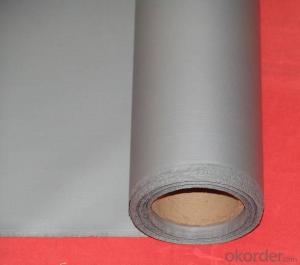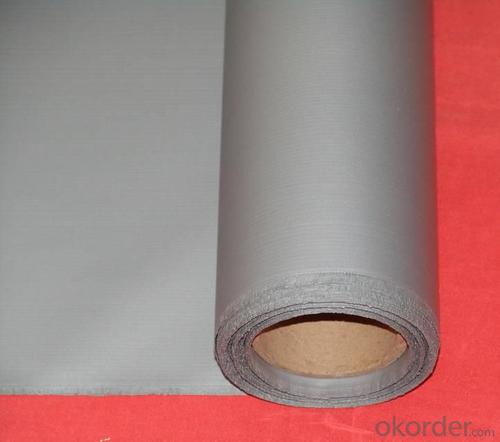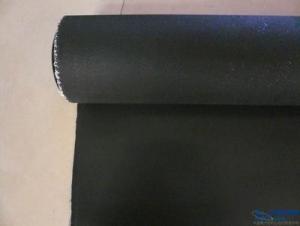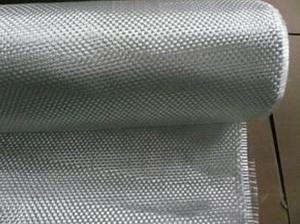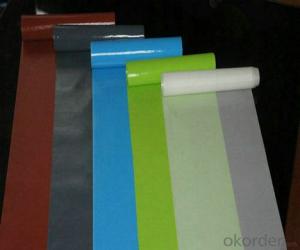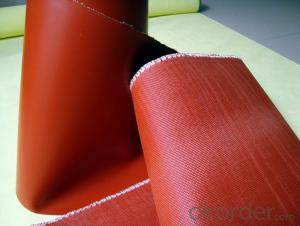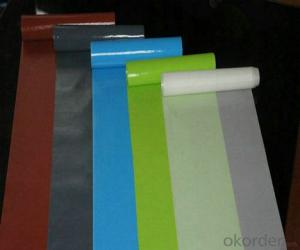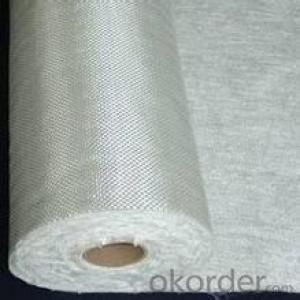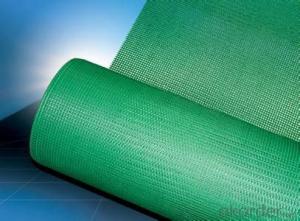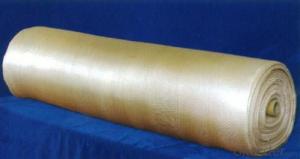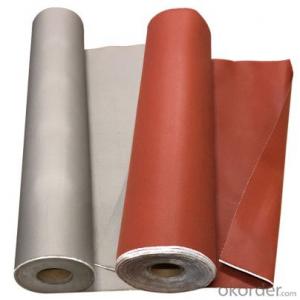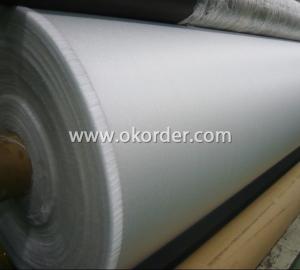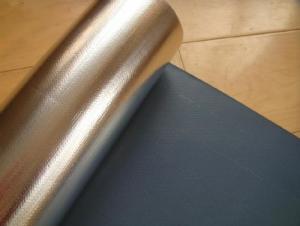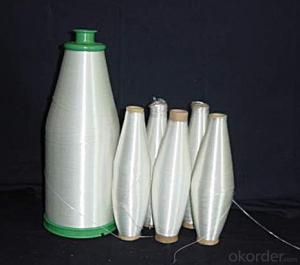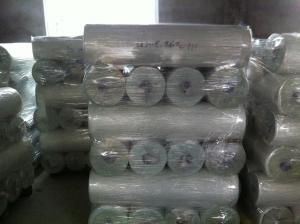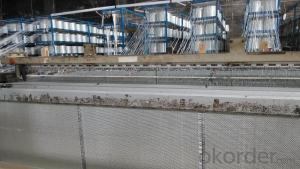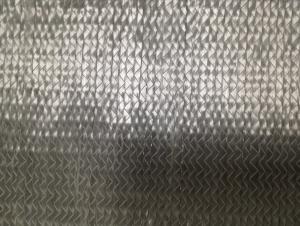Silicon Coated Fiberglass Fabric
- Loading Port:
- Shanghai
- Payment Terms:
- TT OR LC
- Min Order Qty:
- 10000 m²
- Supply Capability:
- 500000 m²/month
OKorder Service Pledge
OKorder Financial Service
You Might Also Like
high mechanical strength,good heat and color resistance,good sealing property,resistance to many common chemical
Properties:
1. Service Temperature -70~300
2. Ozone, oxide, light and weathering aging resistance, excellent weather ability used in outdoors and ages may be reached to 10 years.
3. High insulation: Dielectric constant from 3 to 3.2, breakdown voltage from 20 to 50KV/mm
4. Physical and chemical properties.
Application:
1) Electric insulation: Silicone rubber coated fiberglass cloth features high grade of electric insulation and bear a load of high voltage. It fits for making products like insulation cloth and sleeves
2) Non-metallic compensator: Used as pipeline flexible coupling, non-metallic compensator helps to avoid damage caused by heat expansion and cold contraction. This membrane material specially fit for use in industries of petroleum, chemical engineering, cement, iron and steel and energy sources due to its special features of temperature resistance, anti-corrosion, anti-aging, and good elasticity and toughness
3) Anti-corrosion sector: It is good to be used as inner and outer anti-corrosion layer featuring excellent corrosion resistance, temperature resistance and high strength. It proves to be an ideal anti-corrosion material
4) Others: Apart from above application, it can also be used as sealing material, temperature resistant and anti-corrosion conveyer belt, as well as packaging material.
| model | Thickness(mm) | Thickness(mil) | Breaking Strength(n/50mm) | Bursting Strength | Combustible | width |
| KQ-10 | 0.15 | 6 | 1500/1200 | 2.0 | ≤ 25% | 0-1500mm |
| KQ-20 | 0.25 | 10 | 1800/1500 | 2.1 | ≤ 25% | 0_ 1500mm |
| KQ-30 | 0.40 | 16 | 2000/1600 | 2.2 | ≤ 25% | 0_ 1500mm |
| KQ-40 | 0.50 | 20 | 2200/1800 | 2.3 | ≤ 25% | 0_ 3000mm |
| KQ-50 | 0.60 | 24 | 2400/2200 | 2.4 | ≤ 25% | 0_ 3000mm |
| KQ-60 | 0.70 | 28 | 2500/2300 | 2.4 | ≤ 25% | 0_ 3000mm |
| KQ-70 | 0.80 | 31 | 2600/2400 | 2.5 | ≤ 25% | 0_ 3000mm |
| KQ-80 | 0.90 | 35 | 2800/2600 | 2.5 | ≤ 25% | 0_ 3000mm |
| KQ-90 | 1.00 | 40 | 3000/2800 | 2.6 | ≤ 25% | 0_ 3000mm |
| KQ-11 | 1.20 | 47 | 3400/3000 | 2.5 | ≤ 25% | 0_ 3000mm |
| KQ-12 | 1.50 | 59 | 3700/3300 | 2.8 | ≤ 25% | 0_ 3000mm |
| KQ-13 | 2.00 | 79 | 4200/3800 | 3.5 | ≤ 25% | 0_ 3000mm |
| KQ-14 | 3.00 | 118 | 6500/6200 | 5.0 | ≤ 25% | 0_ 1000mm |
- Q: Is fiberglass fabric resistant to water absorption?
- Yes, fiberglass fabric is resistant to water absorption.
- Q: Can fiberglass fabric be used for curtains and drapes?
- Certainly, curtains and drapes can be made with fiberglass fabric. This material offers numerous advantages for window treatments. Firstly, fiberglass fabric is renowned for its strength and durability, making it an excellent long-term option for curtains and drapes. It can withstand regular use and is resistant to damage, ensuring that your window coverings will remain in good condition for an extended period. Moreover, fiberglass fabric is commonly treated with a special coating that renders it flame-resistant. This is particularly important for curtains and drapes, especially in areas where fire safety is a concern. The flame-resistant properties of fiberglass fabric provide an additional layer of protection and peace of mind. Furthermore, fiberglass fabric is known for its insulation properties. It can effectively regulate temperature and block unwanted drafts, making it a perfect choice for curtains and drapes in both cold and hot climates. The insulation capabilities of fiberglass fabric contribute to energy efficiency in your home, helping to reduce heating and cooling expenses. Additionally, fiberglass fabric is lightweight and effortless to maintain. It is typically resistant to stains, making it easier to clean and maintain the appearance of your curtains and drapes. Fiberglass fabric also tends to resist fading caused by exposure to sunlight, ensuring that your window coverings will retain their color and vibrancy over time. In conclusion, fiberglass fabric is definitely suitable for curtains and drapes. Its strength, flame-resistant properties, insulation capabilities, and ease of maintenance make it a practical and versatile choice for window treatments.
- Q: What are the different fabric coatings available for fiberglass fabric?
- There are several different fabric coatings available for fiberglass fabric, each offering unique properties and benefits. Some of the most common types of fabric coatings for fiberglass fabric include: 1. Silicone Coating: Silicone coatings provide excellent resistance to high temperatures and are often used in applications where heat protection is critical, such as insulation blankets or protective covers for machinery. Silicone-coated fiberglass fabric also offers good chemical resistance and can be used in environments with exposure to oils, solvents, and corrosive substances. 2. Polyurethane Coating: Polyurethane coatings provide a flexible and durable finish that enhances the fabric's performance and lifespan. This coating offers excellent resistance to abrasion, water, and chemicals, making it suitable for various applications, including flexible ducting, conveyor belts, and protective clothing. 3. PTFE (Polytetrafluoroethylene) Coating: PTFE coatings, commonly known as Teflon coatings, are popular for their non-stick properties. This coating provides excellent release characteristics, making it ideal for applications such as conveyor belts, release sheets, and non-stick surfaces for heat sealing and packaging equipment. 4. Acrylic Coating: Acrylic coatings offer good resistance to UV radiation, weathering, and mildew. This makes them suitable for outdoor applications such as awnings, canopies, and outdoor furniture coverings. Acrylic-coated fiberglass fabric also provides a smooth surface finish and is often used in signage and advertising displays. 5. Neoprene Coating: Neoprene coatings provide excellent resistance to oil, chemicals, and moderate temperatures. This coating is commonly used in applications that require protection against abrasion, such as flexible connectors, expansion joints, and gaskets. These are just a few examples of the different fabric coatings available for fiberglass fabric. The choice of coating depends on the specific requirements of the application, including temperature resistance, chemical resistance, flexibility, and durability. Consulting with a fabric specialist or manufacturer can help determine the most suitable coating for a particular application.
- Q: Can fiberglass fabric be used for filtration applications?
- Yes, fiberglass fabric can be used for filtration applications. Fiberglass fabric is often used in filtration systems due to its high strength, durability, and resistance to chemicals. It can effectively remove particles, contaminants, and pollutants from air, water, and other fluids. The tight weave of fiberglass fabric allows for efficient filtration, while still maintaining good airflow. Additionally, fiberglass fabric is easy to clean and maintain, making it suitable for various filtration applications such as air filters, water filters, oil filters, and industrial filtration systems.
- Q: What are the different applications of fiberglass fabric in the oil and gas industry?
- Fiberglass fabric finds various applications in the oil and gas industry due to its excellent properties such as high strength, corrosion resistance, and thermal insulation. It is commonly used for insulation, fireproofing, and reinforcement purposes in pipelines, tanks, and equipment. Fiberglass fabric is also utilized for manufacturing composite materials in the form of pipes, gratings, and platforms, providing durability and resistance to chemicals and harsh environments. Overall, its versatility and reliability make it an essential material for enhancing safety and performance in the oil and gas sector.
- Q: How is fiberglass fabric coated?
- Fiberglass fabric is typically coated using various techniques such as dip coating, roll coating, or spray coating. These methods involve applying a layer of resin or polymer onto the surface of the fabric to enhance its properties, such as improving its strength, flexibility, and resistance to chemicals or fire. The coated fabric is then dried or cured to ensure the coating adheres properly, resulting in a durable and versatile material.
- Q: Can fiberglass fabrics be used for geotextile applications?
- Yes, fiberglass fabrics can be used for geotextile applications. They have excellent properties such as high strength, durability, and resistance to chemicals, which make them suitable for various geotextile functions like soil stabilization, erosion control, and drainage.
- Q: Can fiberglass fabric be used for wall coverings?
- Yes, fiberglass fabric can be used for wall coverings. It is a durable and versatile material that can provide insulation and soundproofing benefits. Additionally, it can be easily applied to walls and is available in various designs and textures to suit different aesthetic preferences.
- Q: How is fiberglass fabric used in the production of insulation boards?
- The excellent thermal resistance, durability, and fire-retardant properties of fiberglass fabric make it widely used in the production of insulation boards. In the manufacturing process, it serves as a reinforcement material and is combined with a binder, such as resin or adhesive, before being compressed to form the boards. This ensures that the insulation material remains stable and prevents it from shifting or settling over time. Additionally, fiberglass fabric enhances the insulation properties of the boards by minimizing heat transfer. This helps to maintain comfortable temperatures in buildings throughout the year, leading to energy efficiency and reduced heating or cooling costs. Moreover, the fire-retardant characteristics of fiberglass fabric provide an extra layer of protection in insulation boards. It acts as a barrier against flames and reduces the risk of fire-related damage. In summary, fiberglass fabric is essential in the production of insulation boards due to its ability to reinforce structures, provide thermal insulation, and offer fire-resistance. It is a versatile and superior choice for various applications in residential, commercial, and industrial buildings where insulation is required.
- Q: How is fiberglass fabric used in the production of thermal gloves?
- Due to its outstanding insulation properties, fiberglass fabric is commonly employed in the manufacturing of thermal gloves. This specific type of fabric is created by skillfully intertwining delicate strands of glass fibers, resulting in a material that is lightweight, long-lasting, and possesses remarkable heat resistance. In the production of thermal gloves, it is customary to incorporate fiberglass fabric as either an inner lining or an additional layer with the purpose of bolstering the gloves' insulation capabilities. This fabric acts as a shield between the frigid external environment and the hand, effectively averting heat dissipation and maintaining warmth. The glass fibers within the fabric exhibit exceptional thermal insulating qualities, meaning they possess poor heat conductivity. This attribute assists in trapping the body heat generated by the hand, forming a layer of warmth that effectively insulates the hands from the cold. Furthermore, fiberglass fabric demonstrates resistance to moisture, which proves to be particularly advantageous in thermal gloves as it aids in keeping the hands dry and prevents the proliferation of bacteria or mold. Consequently, this ensures enhanced comfort during prolonged usage and diminishes the risk of skin irritation or infections. Moreover, fiberglass fabric is renowned for its robustness and durability. This renders it an ideal choice for employment in thermal gloves, as it can withstand frequent use and endure wear and tear. Additionally, it helps preserve the gloves' shape and structure, thereby guaranteeing an extended lifespan. To summarize, the application of fiberglass fabric in the production of thermal gloves is motivated by its outstanding insulation properties, resistance to moisture, and durability. By keeping the hands warm, dry, and shielded from the cold, this fabric plays an indispensable role in the manufacturing process.
Send your message to us
Silicon Coated Fiberglass Fabric
- Loading Port:
- Shanghai
- Payment Terms:
- TT OR LC
- Min Order Qty:
- 10000 m²
- Supply Capability:
- 500000 m²/month
OKorder Service Pledge
OKorder Financial Service
Similar products
Hot products
Hot Searches
Related keywords
